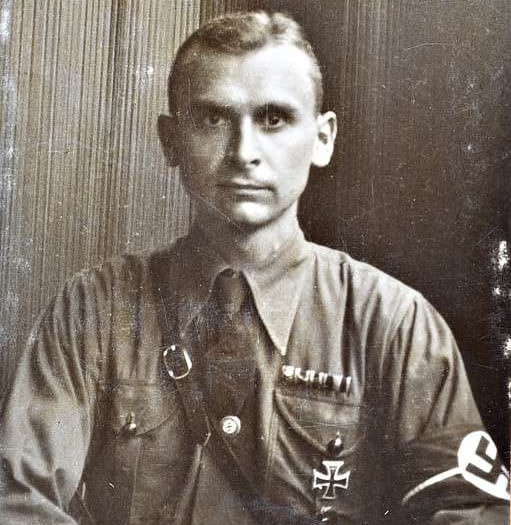"Night of the Long Knives (1934): Hitler’s SA Purge, Causes, & Impact Explained | Nazi Germany History"
"Why did Hitler betray his own SA in 1934? Explore the Night of the Long Knives: the brutal purge of Ernst Röhm’s Brownshirts, Himmler’s rise, and Hitler’s dictatorship consolidation. Detailed analysis of causes, execution, consequences, and its role in WWII. Learn the untold story now."


The Night of the Long Knives: Hitler’s Bloody Path to Absolute Power
The Night of the Long Knives (June 30–July 2, 1934) stands as one of the darkest chapters in Nazi Germany’s history. This brutal purge, orchestrated by Adolf Hitler, eliminated internal rivals, silenced critics, and cemented Hitler’s dictatorship. But what led to this massacre? How did it unfold, and what were its consequences? Let’s delve into the chilling details.
Background: The Rise and Fall of the SA
The SA’s Role in Hitler’s Ascent
The Sturmabteilung (SA), or “Brownshirts,” were the Nazi Party’s paramilitary wing. Led by Ernst Röhm, the SA played a pivotal role in Hitler’s rise to power through intimidation, street violence, and disrupting political opponents like communists and social democrats 111. By 1933, the SA had swelled to 4.5 million members, dwarfing the German army (Reichswehr) and becoming a political force in its own right .
Growing Tensions
However, the SA’s unchecked power soon became a liability:
Röhm’s Ambitions: Röhm envisioned merging the SA with the Reichswehr to create a “people’s army,” threatening the traditional military’s autonomy.
Street Violence: Post-1933, the SA’s drunken brawls and attacks on civilians alienated the public and industrial elites Hitler sought to appease .
Ideological Rifts: Röhm pushed for a “second revolution” to redistribute wealth, clashing with Hitler’s focus on rearmament and political stability .
Hitler faced pressure from President Hindenburg and army leaders to rein in the SA. By mid-1934, the stage was set for a showdown .
The Build-Up to the Purge
Hitler’s Dilemma
Hitler needed to balance his loyalty to Röhm—a longtime ally since the 1923 Beer Hall Putsch—with demands from the military and conservative elites. The final catalyst came in June 1934, when Hindenburg threatened to declare martial law unless Hitler acted .
Fabricating a Pretext
SS leaders Heinrich Himmler and Reinhard Heydrich fabricated evidence of an SA-led coup. False claims included Röhm’s alleged ties to France and plans to overthrow Hitler. The SS and Gestapo compiled hit lists, while the army pledged neutrality in exchange for SA suppression .
The Purge Unfolds: June 30–July 2, 1934
Hitler’s Midnight Strike
On June 30, Hitler personally led a raid on the Hanselbauer Hotel in Bad Wiessee, where Röhm and SA leaders were vacationing. Caught off guard, Röhm and his associates were arrested. Hitler reportedly tore off their insignia, screaming, “You’re under arrest, you traitors!” .
Key Victims
The purge targeted not only SA leaders but also Hitler’s political enemies:
Ernst Röhm: Offered a pistol to commit suicide, he refused and was shot by SS officers .
Kurt von Schleicher: Former chancellor and army general, murdered alongside his wife .
Gregor Strasser: A rival Nazi leader advocating socialist policies .
Gustav Ritter von Kahr: Bavarian leader who opposed Hitler’s 1923 putsch .
Over three days, 85–1,000+ people were killed, including SA members, conservatives, and even bystanders .
Aftermath: Consolidating Nazi Power
Weakening the SA
The SA was neutered, with membership dropping from 4.5 million to 1.2 million by 1938. Röhm’s successor, Victor Lutze, ensured its subordination to the SS .
Rise of the SS
The Schutzstaffel (SS), led by Himmler, emerged as the Nazi regime’s elite force. The SS later orchestrated the Holocaust, leveraging its newfound power.
Legalizing the Purge
Hitler justified the killings in a July 13 Reichstag speech, declaring himself “supreme judge of the German people.” The Law Regarding Measures of State Self-Defense retroactively legalized the murders, eroding judicial independence .
Securing Military Loyalty
The purge reassured the Reichswehr, which swore a personal oath to Hitler after Hindenburg’s death in August 1934, solidifying Hitler’s control over the military .
Legacy and Historical Significance
A Blueprint for Terror
The Night of the Long Knives demonstrated Hitler’s willingness to use extrajudicial violence to eliminate threats. It set a precedent for future atrocities, including the Holocaust .
Propaganda and Public Perception
Nazi propaganda framed the purge as a “preventive strike” against treason. While some Germans welcomed restored order, others were horrified by the regime’s brutality .
International Reactions
Mussolini condemned the purge after an SA-linked coup attempt in Austria, but most nations hesitated to intervene, viewing it as an internal matter .
Frequently Asked Questions
1. Why was it called the “Night of the Long Knives”?
The name, borrowed from a medieval Viking legend, symbolized betrayal. Despite lasting three days, the term highlighted the sudden, secretive nature of the killings .
2. How many people died?
Officially, 85 were killed, but historians estimate 200–1,000+ deaths, including unrecorded executions .
3. Did the SA recover after 1934?
No. The SA was relegated to ceremonial roles, while the SS became the regime’s dominant force .
4. How did Hitler justify the purge?
He falsely claimed it prevented an SA coup, later legalizing the murders through retroactive legislation .
Conclusion: A Turning Point in Tyranny
The Night of the Long Knives marked Hitler’s transformation from chancellor to dictator. By eliminating rivals and terrorizing dissenters, he cemented totalitarian control, paving the way for World War II and the Holocaust. This event reminds us of the dangers of unchecked power and the fragility of democratic institutions—a lesson as relevant today as in 1934.
